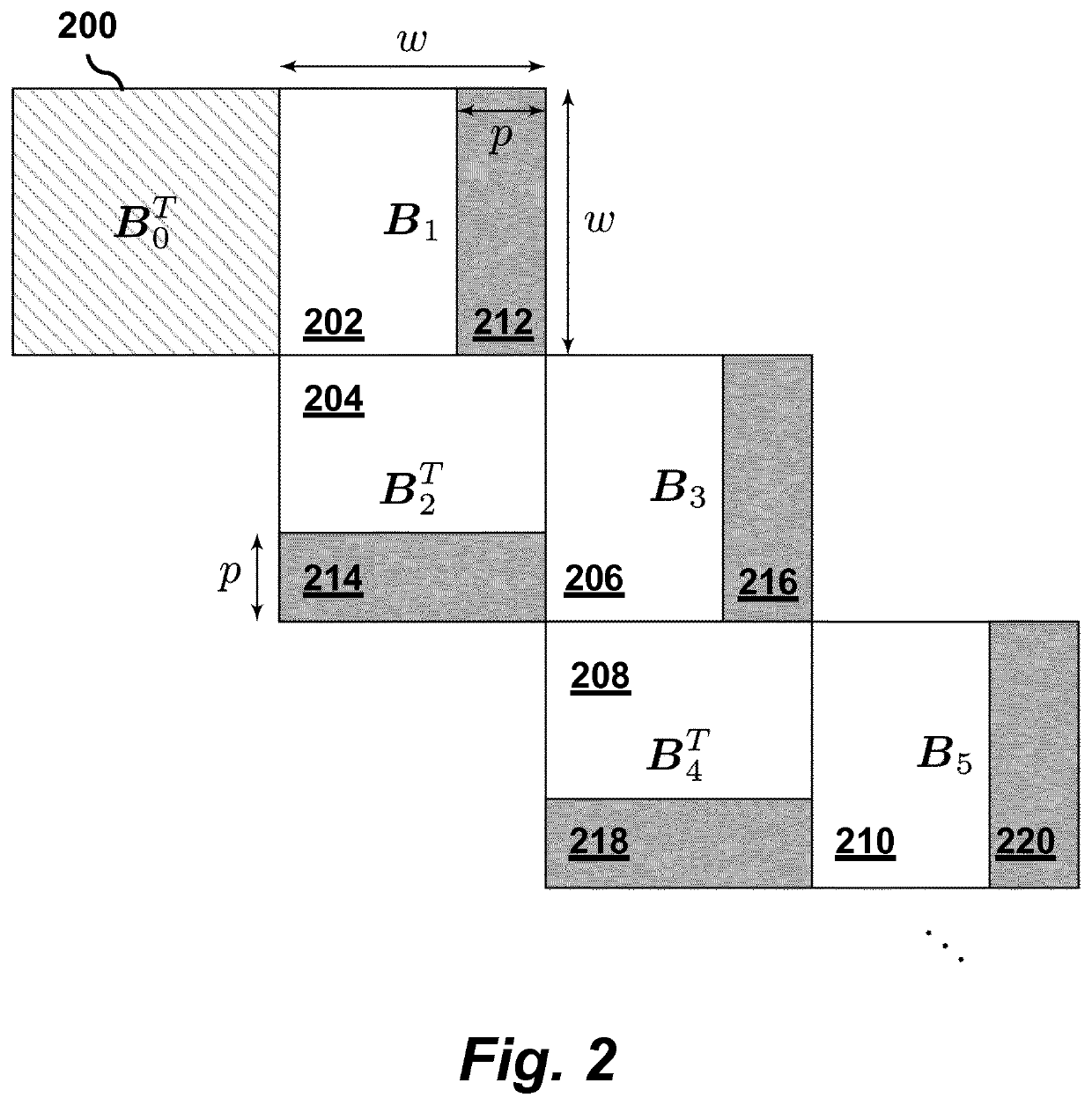Soft-aided decoding of staircase codes
a technology of stairs and codes, applied in the field of hard decision-based codes, can solve the problems of not being able to correct, not being able to solve the problem of t= error correction capability, not being able to solve the problem of not being able to solve the problem of not being able to solve the problem of hd-fec codes that are not the best candidates for very high data rate applications, etc., to improve the decoding of hd-fec codes, increasing complexity and latency
- Summary
- Abstract
- Description
- Claims
- Application Information
AI Technical Summary
Benefits of technology
Problems solved by technology
Method used
Image
Examples
example 1
[0053]FIG. 4 shows a decoding window with w=6 and L=5 and a component code C with t=2 (d0=6).
[0054]A pair (i,j) is used to specify the location of a component codeword in each window, where i∈{1, 2, . . . , L−1} indicates the position relative to the current window and j∈{1, 2, . . . , w} indicates the corresponding row or column index in the matrix of two neighbor blocks. A triple (i, j, k) is used to indicate the k-th bit in the component codeword (i, j), where k∈{1, 2, . . . , 2w}. For example, the component codewords (1, 2) and (3, 1) are shown as shaded columns, while bits (1, 2, 11) and (3, 1, 4) are cells in these columns with darker shading. The bit sequence (3, 1) is a codeword in [YTi+2Yi+3] whose syndrome is equal to zero.
[0055]In the figure, thin crosses are received errors after channel transmission and thick crosses indicate miscorrections after BDD. Block Yi+4 is shown in more details with values of |λl,k| indicated. Cells with values {12, 15, 22} greater than thresho...
example 2
[0061]FIG. 5 illustrates bounding distance decoding (BDD) for an example with t=2 where c is the transmitted codeword and {tilde over (c)}∈C is another codeword at MHD d0=6. The circles around c show the possible locations of r with 1, 2, . . . errors from inside to outside in turn, where the solid circles around c indicate cases that BDD will decode successfully. Diamonds indicate four possible locations where miscorrection happens.
example 3
[0062]Cells, i.e., (4,5,8), (4,5,9) and (4,5,10), with the lowest values {0.2, 0.7, 1.5} of |λl,k| in FIG. 4 indicate the marked 3 HUBs with the lowest reliability within that codeword. In this example, BDD fails to decode bit sequence (4, 5). Fortunately, (4, 5, 8) corresponds to the marked HUB with smallest |λl,k|. Thus, it will be flipped after BF, and then the remaining 2 errors (4, 5, 3) and (4, 5, 10) will be fully corrected by applying BDD again. This corresponds to Case 1.
[0063]For bit sequences (4,1) and (4,3), the decoding results of BDD are identified as miscorrections (as explained in Example 1) with wH(e)=1 and wH(e)=2, respectively. According to the BF rule for miscorrections, 3 and 2 bits with smallest |λl,k| among the marked HUBs, i.e., (4,1,8), (4,1,10), (4,1,11) in (4,1), and (4,3,7), (4,3,10) in (4,3), will all be flipped. As a result, only 2 errors are left in (4,1) and (4,3), which are within the error correcting capability of BDD. This corresponds to Case 2.
[00...
PUM
 Login to View More
Login to View More Abstract
Description
Claims
Application Information
 Login to View More
Login to View More - R&D
- Intellectual Property
- Life Sciences
- Materials
- Tech Scout
- Unparalleled Data Quality
- Higher Quality Content
- 60% Fewer Hallucinations
Browse by: Latest US Patents, China's latest patents, Technical Efficacy Thesaurus, Application Domain, Technology Topic, Popular Technical Reports.
© 2025 PatSnap. All rights reserved.Legal|Privacy policy|Modern Slavery Act Transparency Statement|Sitemap|About US| Contact US: help@patsnap.com



